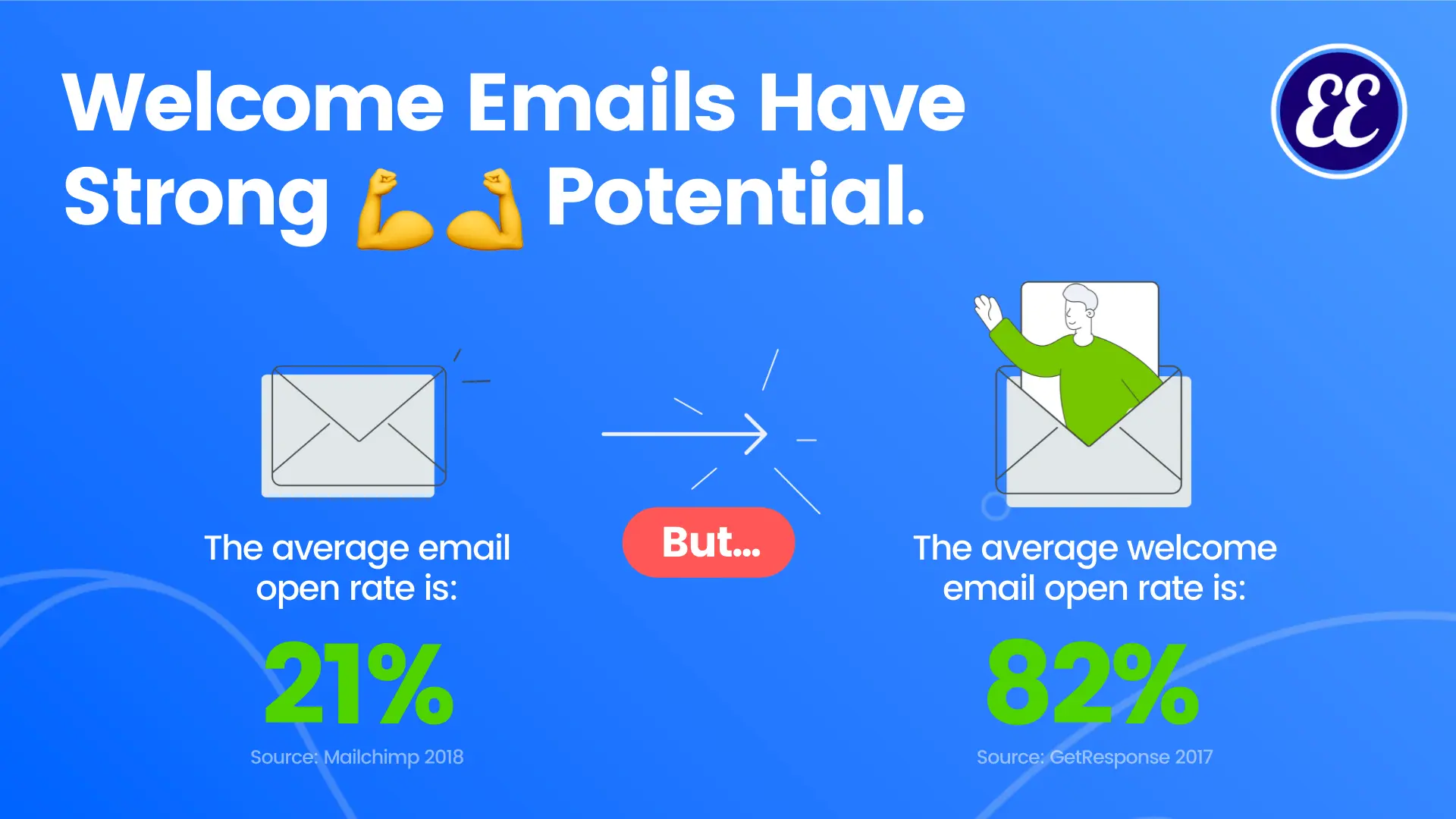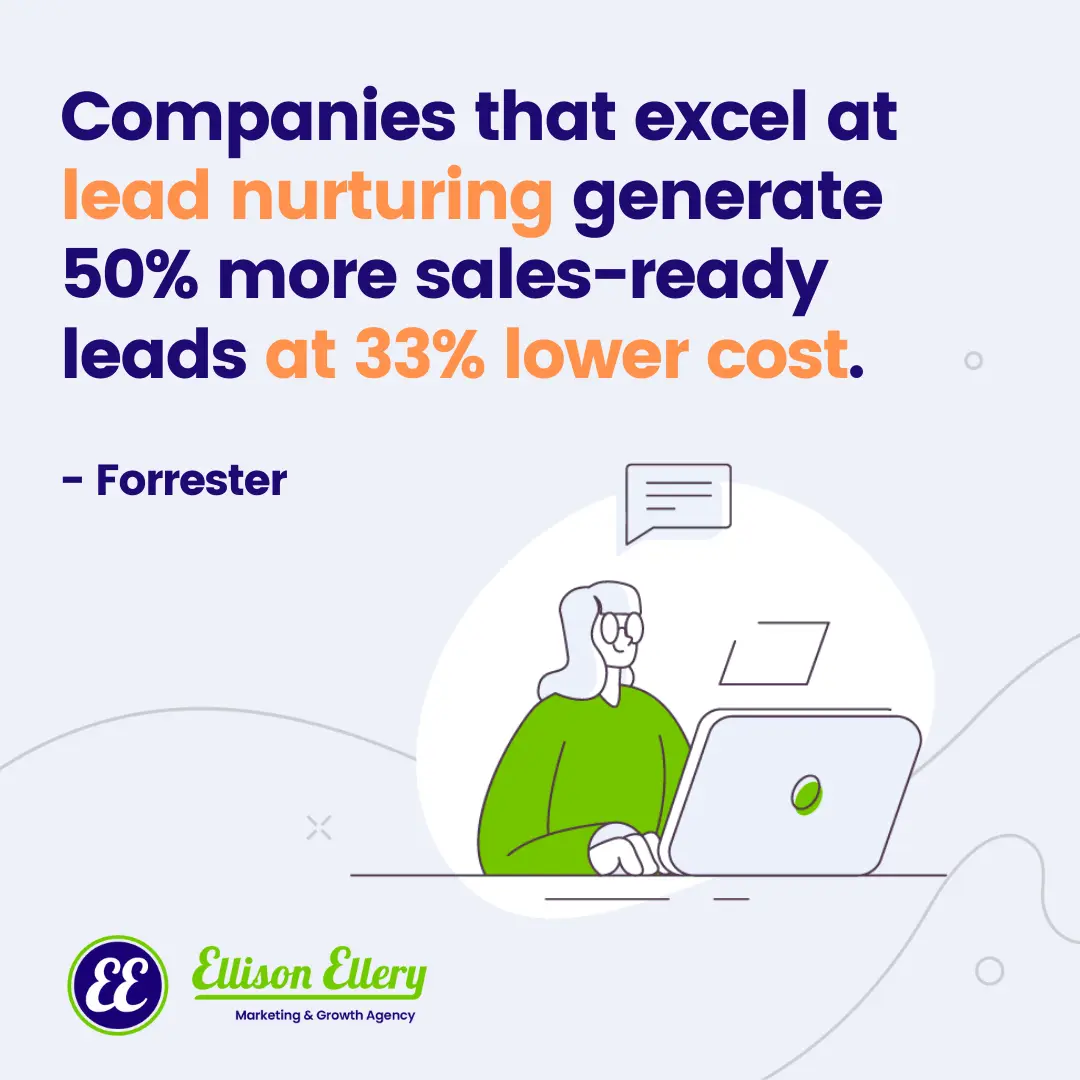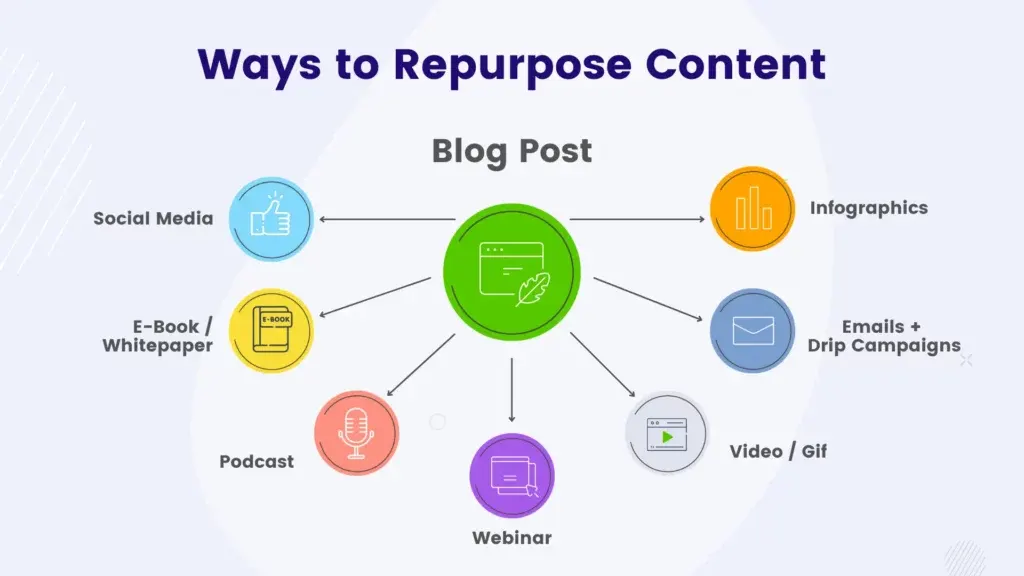Email Lead Nurturing Starts with Defining Your Student Enrollment Journey

Wouldn’t it be nice if your university could show prospective students a Google ad or display ad once, which would be enough to convince them to enroll in the upcoming term?
We would all be hitting the Staples Easy Button all day long. And, I may have dated myself with that reference.
Once you collect someone’s information, you must nurture the relationship. Someone will not marry during your first meeting. You need to take the person on dates and get to know them. If the person wants to marry you after the first meeting, there is a good chance the relationship won’t last.
This is the same for college enrollments. If you enroll a very impetuous student, that student will likely withdraw and drop out of your college just as quickly.
Your college can nurture prospective students through a series of stages before they become enrollment ready. This blog post breaks down the value of investing in inquiry nurturing and the best ways to do it.
Student journey mapping is crucial to understanding your prospective students’ needs. Discover the benefits of a student journey map and how you can create one for your school in our dedicated blog post.
Your nurturing efforts are what will turn your prospective students into enrolled students.
Table of Contents
To truly develop strong relationships, you have to understand your target audience and what matters most to them. You can’t keep guessing what they will find interesting or engaging.
According to Gartner and StickBrands, only 3-5% of buyers are ready to enroll. Most universities’ marketing and enrollment processes are built around enrolling inquiries as quickly as possible. And, if the prospective student isn’t ready to enroll NOW, then they are generally get put into a not interested bucket in your CRM, and all nurturing ends.

Often those inquiries outside the 30 days will receive a random email from your marketing team. Think of those who said, “our enrollment pipeline is drying up, send some emails now!!”
It’s the spray and pray approach, and it never works well.
A robust inquiry nurturing strategy can help cultivate relationships, builds value for your university, and move your prospective student’s down the enrollment pipeline.
Need to Know When To Stop Emailing Prospects
Your university must know when to stop emailing prospective students too. Otherwise, all of your future emails may be doomed to the promotions tab in Gmail. That’s where emails go to die.
Your university needs to keep inquiries engaged until they are ready to enroll.

Inquiries are Interchangeable With the Word Leads [Inquiries = Leads]
Throughout this article, we will refer to your inquiries as leads. In search engines, inquiry keeps popping up as inquiry-based learning, so we settled on lead nurturing to help differentiate the topics. Leads in business are prospects who have shown interest in your products or services. In our case, leads are those prospective students who have shown interest in your university or college but not ready to fill out your application and become a student.
Why is lead nurturing essential for your university (and what will you get out of it)?
You already know this, but prospective students have a lot more choices in today’s online world. Most prospects research schools online before deciding to fill out an online application.
67% of prospective students use search engines as their first source of information for higher education institutions
SearchEngineLand
90% of students are unsure where they want to attend during their initial research stages.
This is a massive opportunity for your college!!
If your university ONLY offers an online application instead of also offering an inquiry form, then that’s the first change to be made.
Your college or university needs to add a form where someone can request to learn more about your university. Once you collect their information, this is where your university needs to develop a robust lead nurturing process, so you can nurture these prospective students towards enrolling at your school.
And if you’re not doing it, remember your competitors are!
Lead nurturing gives prospective students a chance to bond with your university brand, so you can build trust and show them why your university is the right choice for them.
Your team needs to cultivate your email marketing strategy to convert as many inquiries into enrollments as possible.
Lead Nurturing can:
- Multiply the return on any ad spending significantly. Think of all the money you are spending on your university brand campaigns, Google Ads, and Facebook ads. With an effective lead nurturing strategy, you can help make all of those channels more effective, drastically reducing your institution’s cost per enrollment.
- Save your staff’s time (and payroll expense). After the lead nurturing process is developed and launched, you can boost enrollment yield without additional workload. It may cost more upfront, but in the long run, it’s worth it.
- Stay current with every inquiry. When you know where each prospect is on the enrollment funnel, you can engage with prospective students on a more personal level. Identify segmentation opportunities and deliver targeted content at the right time for the best results. Never let another prospective student fall through the cracks! This can only be done with a good CRM utilized by your staff. Reach out to us for some recommendations on what CRM we recommend.
- Move prospective students down your enrollment funnel faster. With a strong lead nurturing strategy and adding automations with triggers, your admissions can save up to 41% of their time on performing repetitive asks. Studies show admissions folks can spend up to 41% of their time doing repetitive tasks that a CRM can eliminate or reduce.

How Do You Know What to Send Prospective Students to Keep Them Engaged?
One of the best ways to get to know what motivates prospective students to enroll is to ask your recently enrolled students and your prospective students.
You can do this in several different ways from:
- One-one-interviews
- Student user studies
- Student workshops
Your lead nurturing techniques won’t push your prospective students through the enrollment funnel if you don’t understand their student motivations and keep them engaged with the appropriate content.
Reach out to Ellison Ellery to kick off your qualitative studies. We can help you get to the heart of what is most important to your students.
Step 1: Develop a Content Strategy
Lead nurturing should be a part of a larger content marketing strategy. Before jumping into your lead nurturing process, developing your content strategy is an essential step, as lead nurturing should be a component of your overall content strategy.
To develop a content strategy, you need to understand your prospective students, what motivates them, what they care about as it relates to earning a degree from your institution, and why they want to from earning the degree (their desired outcome).

University Value Props

Plus, you will want to identify which higher ed value props and outcomes are most valuable to your prospective students. Then use this messaging in your lead nurturing campaigns and efforts.
Providing the right content at the right time can attract inquiries and make a case for why someone should be interested in enrolling in your university.
Students inquired about learning more about your school, so tell them more about your school in a way that matters to them.
When creating a content marketing strategy, let the student’s enrollment journey inform which type of content you should be creating.
Each stage in the student’s enrollment journey has to be supported by content that pushes prospective students along the road from awareness to happy enrolled students.
Start By Defining your Content Strategy. Now that you know who you’re speaking to (your student personas), it’s time to devise a plan to deliver engaging content to prospective students. Listen to their needs, talk to your key demographic, and send them answers to their pending questions.

After all, your brand is the best solution to their problems – tell them why in a fun and engaging way!
By tailoring content to each stage of the enrollment funnel (enrollment graphic below), you can nurture your prospective students to improve yield drastically.
Enrollment Funnel Steps:
- Awareness Stage: Top-of-the-funnel content should always focus on pain points, challenges, and questions that are engaging and informative to your prospective students. Your main goal in using content is to drive awareness and traffic back to your website. Some examples are blog posts, videos, and lead magnets. This stage is where students want to determine if your college offers the program they would like to take, tuition, and program modality (online, on-ground, blended), and for on-ground, they will want to know your location in proximity to their home or office.
- Consideration Stage: A middle-of-funnel student enrollment journey is when prospective students compare your college to another college and will start figuring out if your degree will help them solve a problem they have identified. You want to educate your prospective students about the enrollment process and how to decide between schools. Think of creating more elements you see in e-commerce such as comparison tools.
The consideration stage includes sharing:
- Student testimonials
- Alumni success stories,
- Virtual admissions open houses
- Case studies
- Social proof (badges, honors, rankings)
- Decision Stage: Now is the time for a personal connection with your prospective students. You will leverage content to help get prospective students to enroll —focus on connecting with your prospective students on an emotional basis and why you’re the best choice, not just your degree basics.
- Retention Stage: Encourage your students to stick around. The focus here is building loyalty through exclusive content, consistent value, and other more personalized lead nurturing techniques.

Step 2: Automated Lead Nurture Campaigns
Our advice for your institution, automate as much as you can. Now that you have a strong content strategy in place, it’s time to use automation tools and reach your audience at a convenient time for them (which might not be most convenient for you or your team). If a lead comes in at 10 pm on Friday, then your CRM can start communicating with them at 10:01 pm that same Friday. This is why automation is so powerful!
If your college uses a CRM, you can set up automated lead nurture sequences that help strengthen relationships with prospective students and help lighten your Admissions team’s workload while ensuring no prospective student falls through the cracks.
It’s time to take a load off your admissions team while allowing your marketing efforts to foster deeper connections with your inquiries to help them become more enrollment-ready.
Marketing needs to focus on delivering value to prospective students and educating them about your university, what it can offer them, and your career and educational outcomes.
Take advantage of lead nurturing automation to help you connect with your inquiries meaningfully — work smarter, not harder, and outperform your competitors.
Connecting your prospects with the information they need creates the ultimate win-win scenario, starting with a robust prospective student database and automation workflow and ending with a significant improvement in your enrollment yield.

Your institution should prioritize cultivating a long-term relationship with your prospective students. Building relationship happens over time, and future enrollments are just as worthy of your attention as enrollments that occur tomorrow.
When someone requests information from your university, have an automated email campaign that provides them with what they expect within the first 5 minutes or less of when they inquired.
This auto email will generally be the most open email your university sends. Don’t squander this opportunity with a transactional communication that says, “We received your info, and someone will contact you shortly“. Never leave a prospect hanging by not responding to their inquiry!

Modernize Your Tech Capabilities: Lead Nurturing Tactics
In order to create a great lead nurturing experience, you need to leverage modern marketing tech to create an automated outreach communications sequence.
Your university needs to figure out:
- What emails will the prospect receive?
- How will I segment my contacts?
- How often will you send emails out?
- What happens when they interact with the email?
- What can triggers be set up to put people on different communication paths?
While it may be tempting to lump every prospect into one funnel, marketing automation makes it simple to engage in multiple meaningful dialogues consistently.
If prospective students feel they are getting a great enrollment experience, those prospective students are more likely to keep opening your emails or text messages, so you can continue sharing the value of your university and telling your unique story. With each email you send, you have to keep earning the right for the next one to be opened.
Automations can help your college with:
- Streamline your enrollment process by automating time-consuming, repetitive tasks
- Personalize the admissions process at scale without eating up man-hours
- Allow more time for your Admissions team to have more meaningful conversations
- Set up behavioral triggers to identify those students who want to enroll now and nurture those who are unsure when they will enroll
- Have triggers set up to know when a human should get involved and contact the prospective student

Excite People to Want to Learn More About Your School
Create an inbound content marketing strategy driven by an understanding of your student’s pain points and what motivates them to enroll. You want to focus on providing value to your students first and making them more enrollment-ready before engaging them to buy your product or service.
Learn how to create content that can be repurposed over and over again.

But you can’t just blast out emails and expect the tuition dollars to start rolling in. Here’s what you have to do to make your emails powerful by following these steps below.

How to Write More Engaging Emails
Step 1: Send Personalized Emails
Attention has become a hot commodity — and no one wants to dedicate their attention to generic email blasts from faceless universities to help you feel like just a number.

The way to get prospective students’ attention? Personalization.
Personalized emails use prospective students’ data (location, interests, activity on your website, etc.) to provide them with more relevant information. Personalization can be an exhausting endeavor, but it works!
Making the extra effort to personalize content guarantees a much bigger ROI and is better for building trust in your brand. Consumers want personalized experiences that offer insane amounts of value.
Personalization requires a sophisticated tech stack. This means you may need to invest in other platforms to do this.
In our blog article, we discuss email marketing practices, but here is a big one that most universities are not using; emojis in their subject lines!
While your university is an academic institution, you are communicating with people, so be personable. Allow your database to grow with your university by focusing on engagement – and remind your prospective students that there’s a human behind every interaction, or at least it feels like that.
Your University is Communicating with People, so Be More Personable
And personalization can extend beyond harnessing data — try adding more personality to your emails!
One way your university can start being more personable is by using emojis in your email subject lines! You’re not selling to a data point — you’re selling to a real live person.
According to Campaign Monitor, businesses and universities using emojis in their emails can see up to a 56% increase in their unique open rates.

Popular lead nurturing techniques include:
- Creating and sending content, which can include images, video, gifs, and articles through personalized email campaigns
- Using text messages/SMS to share value about your university, program and share a large variety of interesting content (read more about the value of using text messaging in your lead nurturing strategy)
- Retargeting the prospect with ads to keep your brand top of mind
Higher Ed Email Marketing Strategy
An effective email marketing strategy is one of the most powerful tools in your lead nurturing efforts. On average, every $1 spent on creating your email marketing plan generates a return of $42.
Often universities buy expensive CRM systems and do not budget or plan on creating engaging lead nurturing campaigns, so often these CRMs are not used to their full capabilities.

But you can’t just blast out emails and expect the dollars to start rolling in. 77% of email marketing ROI came from segmented, targeted, and triggered campaigns.
Text Messaging Has a BIG Role to Play in Lead Nurturing
Read on to understand why text messaging needs to be part of your lead nurturing strategy. SMS is the most preferred way for billions of people to communicate, including your students and prospective students.

Why your institution must add text messaging to your enrollment strategy:
- 95% of text messages are read within the first 3 minutes after they are received.
- Short text message open rate is nearly 98%, in comparison with the email – open rate is 22%. (see this graph below)
Imagine you create a 30-second ad for your university or program and send it by text message. 98% of people you send this ad to will start watching it! You can’t replicate this level of reach with any other channel. The most interesting thing is that 90%+ of universities do not use SMS mailing. Is your institution one of them?

Data Scrubbing Is a Must
Data scrub until it’s squeaky clean. A clean database is a happy database. With a CRM system, you’ll better understand your prospective students and how they prefer to interact with your university. There’s endless opportunity to leverage data from CRM tools for clear goal-setting and better segmentation practices.
Your university needs to know when to stop emailing prospective students too. Otherwise, your emails may be doomed for the promotions tab in Gmail. That’s where emails go to die.
Creating a profile for each prospect will ensure quick access to information when either marketing or Admissions teams need it. Keep track of specific actions, what channels drove the person to to want to learn more about your school, how often they engage with your university, what pages they visit on your website, etc. Your data field will become a goldmine of data points to better leverage to test different messaging and approaches.
If your CRM can’t keep up, we love and recommend HubSpot. With HubSpot, your university marketing team can do so much without engaging your IT department. This reduces time lags and friction between marketing and IT’s priorities for your university. Plus, it’s been our experience that those who use HubSpot find it much easier to use, saving your university payroll hours to do simple things like creating landing pages, email campaigns, pulling reporting, etc.
Our agency, Ellison Ellery, can help set up your HubSpot and offer regular maintenance to ensure it’s being used to its full potential to help your college grow.
How Can Ellison Ellery Help Your University or College?
Looking to dive even deeper into lead nurturing?
Ellison Ellery helps universities and colleges improve brand awareness and grow enrollments through lead nurturing, branding campaigns, and strategy.
With a lead nurturing strategy that boosts trust in your brand and a team of experts on your side, your prospects will move swiftly down the funnel in no time, allowing you to grow your tuition revenue and university.
Our goal is to help you meet yours.
Schedule a Free Marketing Assessment where we can discuss your goals, challenges, and opportunities.








